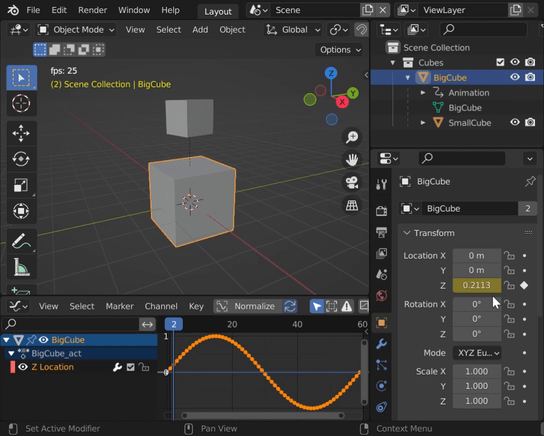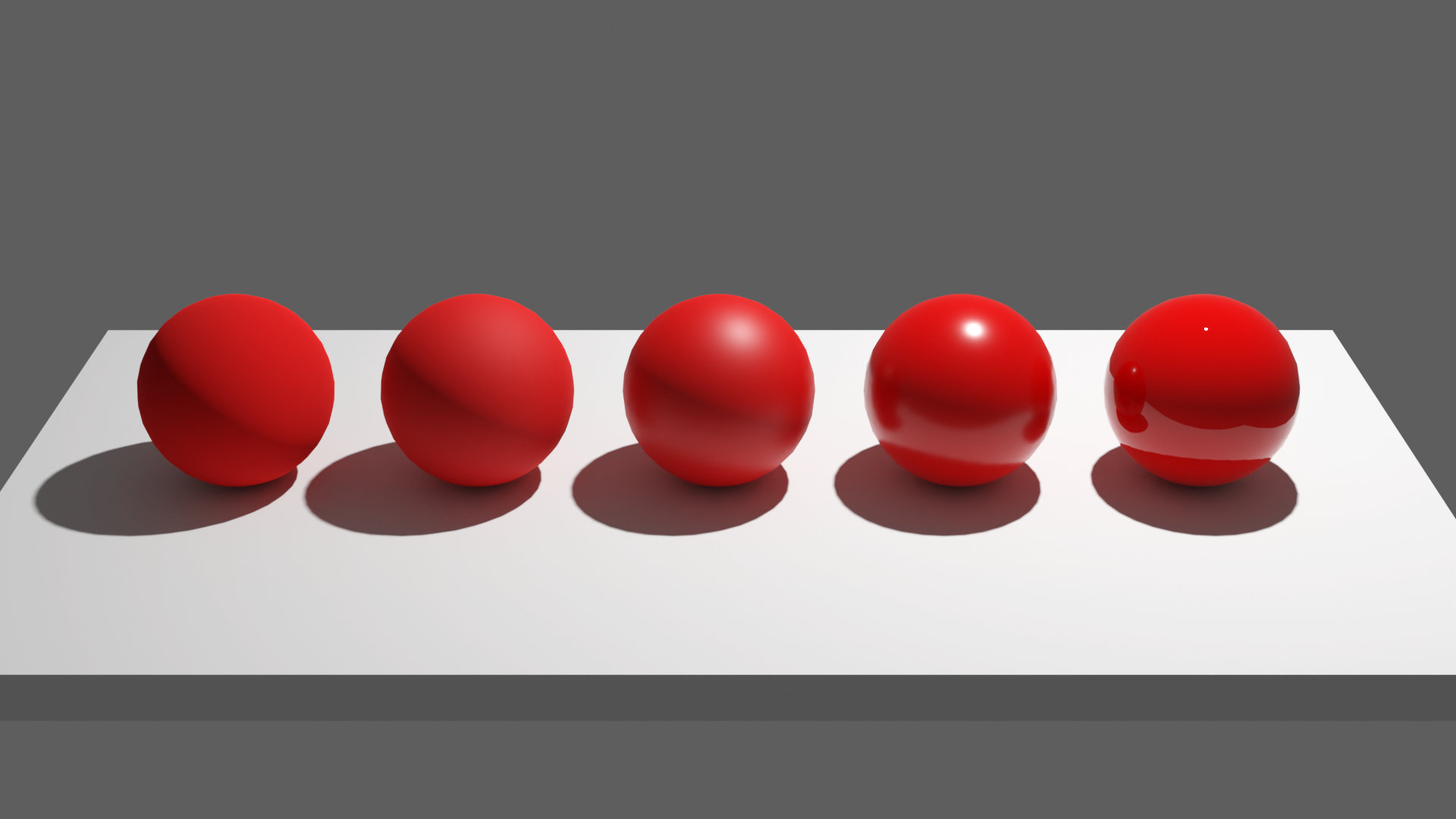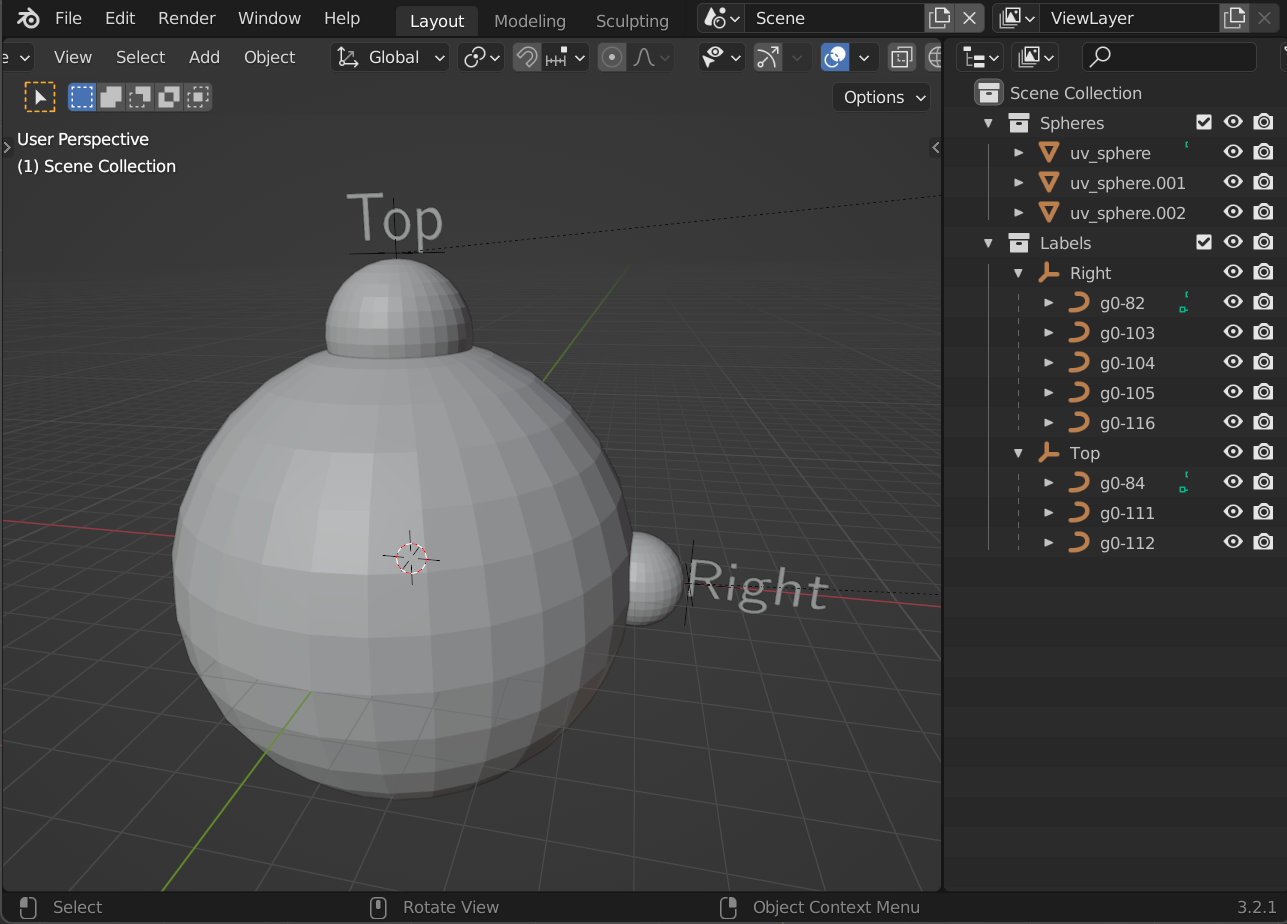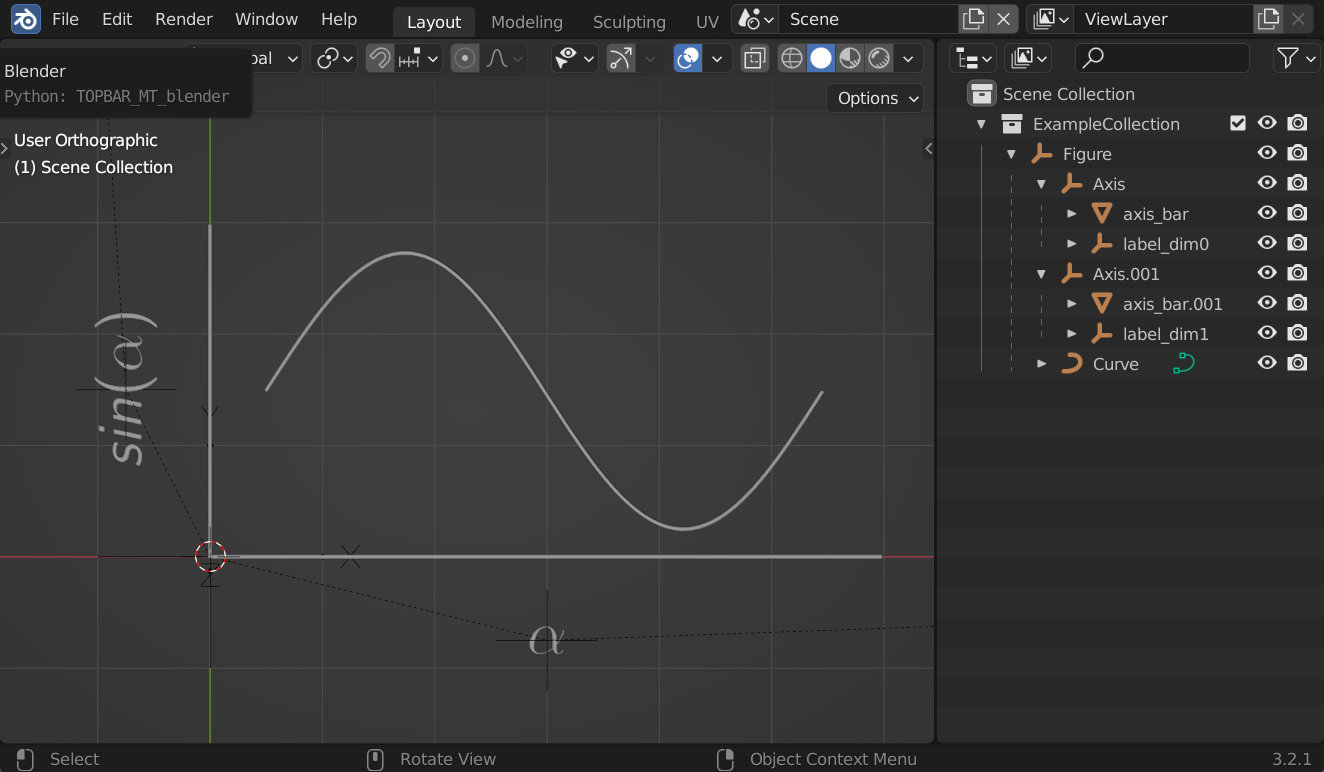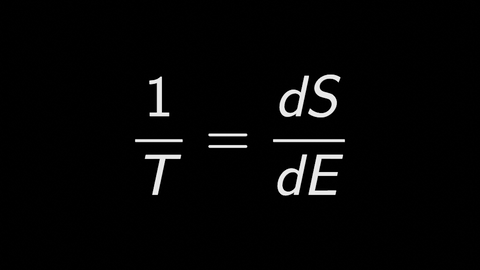hlbpy (high-level blender python) is a library intended to make it more convenient to set up scenes in Blender with python.
If you have ever used the blender python api, you have probably noticed that it is not really designed to quickly build scenes with it. Even doing simple stuff (e.g. adding a cube to the scene) can easily require several lines of code. hlbpy essentially adds a high-level layer above the blender python api to make typical scene building tasks easier.
I mainly write this library for my myself, to make it easier to create videos for my YouTube channel: youtube.com/c/marblescience Anyway, you are welcome to use the code! Just be aware that it is far from complete, far from well tested, and far from well documented.
Here are some code examples to give you an idea how you can use hlbpy.
import hlbpy
from math import pi
import numpy as np
hlbpy.run_in_blender()
scene = hlbpy.Scene.from_context()
cubes = scene.link(hlbpy.Collection("Cubes"))
big_cube = cubes.link(hlbpy.mesh.Cube(edge_length=2, name="BigCube"))
small_cube = cubes.link(hlbpy.mesh.Cube(edge_length=1, name="SmallCube"))
small_cube.location = (0, 0, 2.5)
small_cube.parent = big_cube
big_cube.set_keyframes("location", np.sin(np.linspace(0, 2*pi, 60)), index=2)
small_cube.set_keyframes("rotation_euler", [[0, 0, 0], [0, 0, 2*pi]], frame_numbers=[0, 60])
scene.frame_end = 60In this example, we create a new collection "Cubes".
We link two cubes to this collection.
We change the location of one cube.
We parent one cube to the other.
Finally, we add keyframes to animate the cubes.
Once executed, this code opens blender, and this is what you would see:
import hlbpy
hlbpy.run_in_blender()
scene = hlbpy.Scene.from_context()
environment = scene.link(hlbpy.Collection("Environment"))
marbles = scene.link(hlbpy.Collection("Marbles"))
ground = environment.link(hlbpy.mesh.Cuboid((6, 3, 0.2)))
ground.location = (2, 0, -0.1)
for i in range(5):
marble = marbles.link(hlbpy.mesh.UVSphere(radius=0.4))
marble.shade_smooth()
marble.location = (i, 0, 0.4)
red_material = hlbpy.material.PrincipledBSDF(name="Red", srgb=(200, 0, 0))
red_material.roughness = 1 - i / 4
marble.material = red_materialimport hlbpy
from hlbpy.directions import *
from math import pi
hlbpy.run_in_blender()
scene = hlbpy.Scene.from_context()
spheres = scene.link(hlbpy.Collection("Spheres"))
labels = scene.link(hlbpy.Collection("Labels"))
main_sphere = spheres.link(hlbpy.mesh.UVSphere(radius=5))
sphere_right = spheres.link(hlbpy.mesh.UVSphere(radius=1))
sphere_right.location = main_sphere.right
label_right = labels.link(hlbpy.special.Tex("Right"))
label_right.align_children(LEFT)
label_right.rotation_euler = (pi/2, 0, 0)
label_right.location = sphere_right.right + 0.1 * RIGHT
sphere_top = spheres.link(hlbpy.mesh.UVSphere(radius=1.5))
sphere_top.location = main_sphere.top
label_top = labels.link(hlbpy.special.Tex("Top"))
label_top.align_children(OUT)
label_top.rotation_euler = (pi/2, 0, 0)
label_top.location = sphere_top.top + 0.1 * UPimport hlbpy
import numpy as np
hlbpy.run_in_blender()
scene = hlbpy.Scene.from_context()
collection = scene.link(hlbpy.Collection("ExampleCollection"))
x_values = np.linspace(0, np.pi * 2, 100)
y_values = np.sin(x_values)
data = np.stack((x_values, y_values), axis=1)
fig = hlbpy.plotting.Figure(shape=(6, 3))
fig.line_plot(data)
fig.axes[0].set_latex_label(r"$\alpha$")
fig.axes[1].set_latex_label(r"$sin(\alpha)$")
collection.link(fig)
hlbpy.view.set_view([0, 0, 0], orthographic=True)import hlbpy
hlbpy.run_in_blender()
scene = hlbpy.Scene("TestScene")
collection = scene.link(hlbpy.Collection("ExampleCollection"))
tex1 = collection.link(hlbpy.special.MathTex(r"\frac{1}{T} = ", "{dS", r" \over", " dE}"))
tex2 = collection.link(hlbpy.special.MathTex(r"\frac{1}{T} = ", "{\Delta S", r" \over", " \Delta E}"))
tex1.transform(tex2, start=0, n_frames=30)
tex3 = collection.link(
hlbpy.special.MathTex(r"\frac{1}{T} = ", r"{S_{E+\Delta E} - S_E", r" \over", " \Delta E}"))
tex2.transform(tex3, start=50, n_frames=30)
hlbpy.view.set_view([0, 0, 0], orthographic=True)(to be added)
This code is under the GPL3 License. An exception is the code in the "external" and the "io_curve_svg" directories. I have not written this code myself. You can find information about the authors and the License for those files at the top of each file. Some of it is from Grant Sanderson's great Manim library which in general has been an inspiration for a lot of the stuff in this library.
